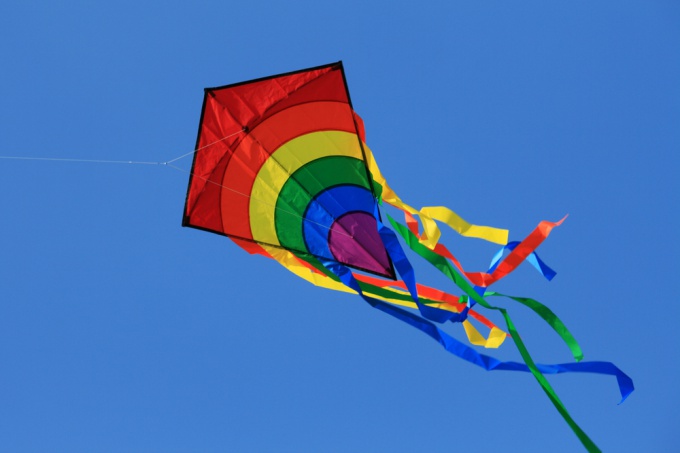The centuries-old history the kite has created many of its structures from the simplest that you can collect in one evening, to designs, to production of which can take a long time.
To make a kite simplest design we will need 3 wooden square rail section 5-8 mm. Long, the two rails must be in the range of 700-800 mm, and the third, 450 to 500 mm. we'll also need a large sheet of thin paper, although better for the cloth to use a light plastic film, because it is more durable. You will also need thread and glue, such as PVA or "Moment" and about 100 meters of fishing line with a thickness of 0.5-0.8 mm.
- Two long slats are connected in the middle using thread. Short rail primatives the ends of two long so that on the one hand we got an isosceles triangle. Thread carefully sizing with glue and let it dry.
- Further, in order to make the kite, pull on the frame of plastic film, which can also be attached using thread and glue. The film should be well stretched and not SAG.
- You need to make and attach the bridle snake. To do this, each vertex of the resulting triangle tie line. Each filament fishing line connected with each other. The length of the two threads attached to the edges of the structure should be approximately equal to the long side of the triangle. The third thread, which is attached to the center of the snake should be somewhat shorter and its length will depend on the lifting force of the kite. So its length is better to adjust already at startup. To the connecting strands will be attached to the guard rails, then there is a long fishing line wound on the spool or a special reel which can be manufactured, for example, from a piece of plywood.
- Now you need to make the kite tail. The tail is the stabilizer of flight, so it should be treated responsibly. The easiest way to make the tail of fishing line or string a few meters long, which bind ordinary sheets of paper, folded like an accordion. These leaves need to be tied at a distance of 15-30 cm from each other. You can think of and another embodiment of the tail. Perhaps the length and weight of the tail will have to pick up when it is started. Too heavy the tail will pull the snake down, too light will allow it to twist, leading to the fall of the serpent.
That's all our snakes ready for the first launch. It is best to fly a kite together, pre-unwound Leer 20-30 meters and start running against the wind. Once snakes begin to escape from the hands, it is necessary to let go and manage it with the help of lifelines. The first time you might not succeed, but it is normal in any business need to acquire some experience and you will succeed.
